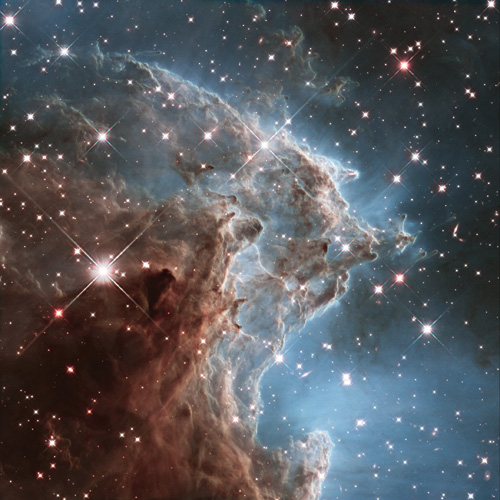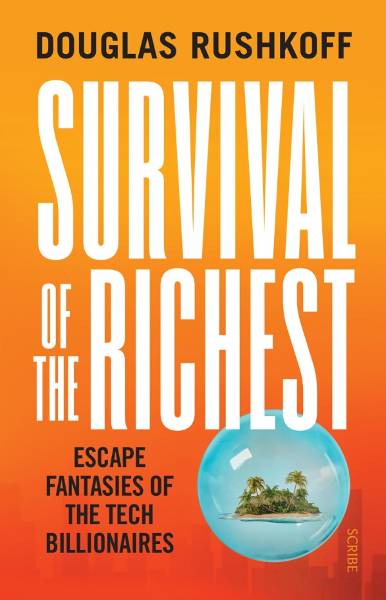
This article is a preview from the Summer 2014 edition of New Humanist. You can find out more and subscribe here.
Ninety-seven-and-a-half per cent of the universe is invisible. This has got to be one of the most extraordinary discoveries in the history of science. Yet it still hasn’t trickled into the consciousness of most scientists. They still have not woken up to the shocking fact that everything they have been studying – everything science has been looking at over the past 350 years – is no more than a minor contaminant of the universe, like the frosting of snow on a mountaintop.
About 4.9 per cent of the universe is made of atoms – the stuff of which you and I and the stars and galaxies are made. And, of that, only half have we ever seen directly with our telescopes. Astronomers suspect that the other half is gas drifting between the galaxies, either too cold or too hot to glow with light.
But, in addition to the 4.9 per cent ordinary matter, almost six times as much – 26.8 per cent of the mass of the universe to be exact – is in the form of “dark matter”. This gives out no light or at least too little light to be detected by our most sensitive instruments. We know of its existence only because it plucks at the visible stars and galaxies with its gravity, causing them to move in a different manner from what Newton would have predicted.
As to the identity of the dark matter, your guess is as good as mine. Speculations range all the way from the fridge-sized black holes made in the earliest moments of the Big Bang to reverse-time relics surviving from the cosmic future (really!) to hitherto undiscovered subatomic particles. There was a hope that a candidate subatomic particle might turn up at the Large Hadron Collider, the giant particle accelerator near Geneva. But so far no joy. In idle moments, I daydream about whether there might not be dark stars, dark planets and dark life, and that the real reason a 50-year search for extraterrestrial intelligence has drawn a blank is that the dark stuff is where the action is, with the hectic hurly-burly of galactic commerce going on all around us – invisibly.
But, in addition to the 4.9 per cent ordinary matter and the 26.8 per cent dark matter, a whopping 68.3 per cent of the mass of the Universe is “dark energy”. (Remember, according to Einstein, all energy has an equivalent mass – it weighs something.) The dark energy is invisible, fills all of space and has repulsive gravity. Although they tell you at school that gravity sucks, we now know that, for most of the stuff in the universe, it actually blows! The repulsive gravity is speeding up the expansion of the universe, which is how the dark energy was discovered in 1998. Imagine that: science overlooks the major mass component of the universe until barely two decades ago.
If physicists are baffled by dark matter, they are utterly at sea when it comes to the dark energy. Our very best theory of physics is “quantum theory”. It is fantastically successful. It has given us lasers and computers and nuclear reactors. It explains why the Sun shines and why the ground beneath your feet is solid. But, when quantum theory is used to predict the energy of the vacuum – that is, of the dark energy – physicists get a number which is one followed by 120 zeroes bigger than what we observe. This is the biggest discrepancy between a prediction and an observation in the history of science. I don’t think I am being controversial by saying there is probably something a little wrong with our understanding of reality.
Although some question the existence of dark matter and dark energy, they are probably real. Although we do not know exactly what they are, we can characterise their gross properties. But it is a sobering thought that we have constructed a picture of the universe – the great edifice of modern cosmology – on the basis of the mere 2.5 per cent of the cosmos we can see directly with our telescopes. Imagine if, back in the 19th century, Charles Darwin knew only about frogs and knew nothing of trees, dogs, grasshoppers or blue whales. How successful would he have been in coming up with a viable theory of biology like the theory of evolution by natural selection? Cosmologists find themselves in a similar position to Darwin. I’m not saying they are going to be proved wrong. But, clearly, some huge idea is missing. When it is found, hopefully it will help weld the arbitrary bolt-ons of dark matter and dark energy into an elegant, seamless whole. My bet is that there are big surprises on the road ahead – surprises which could turn our picture of the universe upside down.

